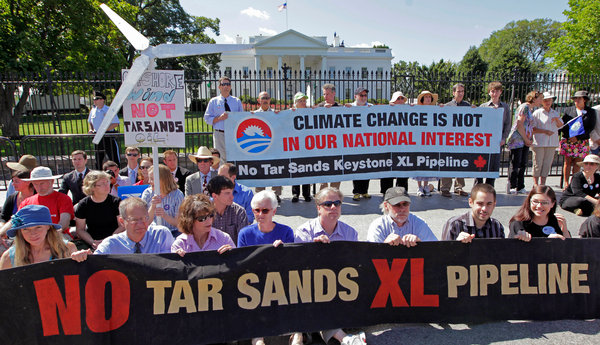
New White House policy admits social cost of carbon higher than they thought
The official policy of the Obama administration now asserts that the social cost of carbon emissions to society are 60% higher than they previously estimated.
News has been slowly percolating up this week about a little-noticed shift in Obama administration policy that — if the administration is serious about avoiding the costliest impacts of climate change — should have far-reaching effects. Whether it will, of course, remains to be seen.
As Brad Plumer of the Washington Post explains:
Last week, the Department of Energy announced a little-noticed update to its energy-efficiency standards for microwave ovens. And there was a surprise buried in the fine print: The agency is now using a significantly higher figure for the “social cost of carbon” in calculating the benefits of the rule.
Instead of assuming that the harm caused by carbon-dioxide emissions comes to $22 per ton in 2013, regulators are now using a figure of about $36 per ton.
Read that again. The official policy of the Obama administration now asserts that the costs to society of carbon dioxide emissions are some 60% higher than they previously had estimated.
Shifts like that don’t happen without good reason. Perhaps it was the wildfires, droughts, floods, and Superstorms we’ve witnessed in our backyards in recent months. The Sustainable Energy and Environment Coalition of the House of Representatives recently put out some startling facts and figures regarding how much extreme weather has cost the United States in the past two years. They estimate that extreme weather events in 2011 and 2012 cost US taxpayers some $136 billion, or $1,610 per taxpayer.
Unfortunately, as we’ve written previously, the Obama administration’s State Department doesn’t seem to have gotten the memo. The EPA criticized State severely recently in comments regarding the review of the Keystone XL pipeline, citing State’s failure to consider social cost of carbon as a major weakness.
But this news out of the White House this week that they see greater costs associated with greenhouse gas emissions and their resulting climate change impacts should be a new wakeup call. We simply can’t ignore the fact that each ton of CO2 that we put in the air has a dollar sign associated with it.
And what’s more, in the absence of a carbon price, the most vulnerable among us are paying that price and not the corporations responsible. In the case of the Keystone XL pipeline, our analysis shows that, depending on precisely what figure you use for the social cost of carbon, its associated climate costs could be as high as $100 billion per year.
Even the normally conservative International Monetary Fund (IMF) has awoken to this reality. Their much discussed recent paper on global fossil fuel subsidies suggested that global fossil fuel subsidies include some $1.4 trillion per year in subsidies due to unaccounted for social costs of carbon. They made clear that because the social costs of carbon aren’t captured by the prices paid for fossil fuels or by fossil fuel producers, governments are in essence providing a subsidy. That’s a big deal…and even that figure may be low if you take into account the White House’s new estimate.
What does all this mean? Well, as David Roberts at Grist and Plumer at the Washington Post both lay out, this makes the case for pricing carbon even stronger than it already is. The benefits of policies that that reduce our CO2 emissions are ever more clear when a more accurate (and thus higher) social cost of carbon is used.
What it also makes clear is that new fossil fuel infrastructure projects have enormous costs to society associated with them. Each project that perpetuates our use of fossil fuels (and thus CO2 emissions) costs society with every ton of CO2 that goes into the air. And now the Obama administration admits that this cost is even higher than they thought.
When it comes to the Keystone XL pipeline, however, it remains to be seen whether the Obama administration will listen to its own analysis and recognize that the costs of this pipeline are too great to ignore.
